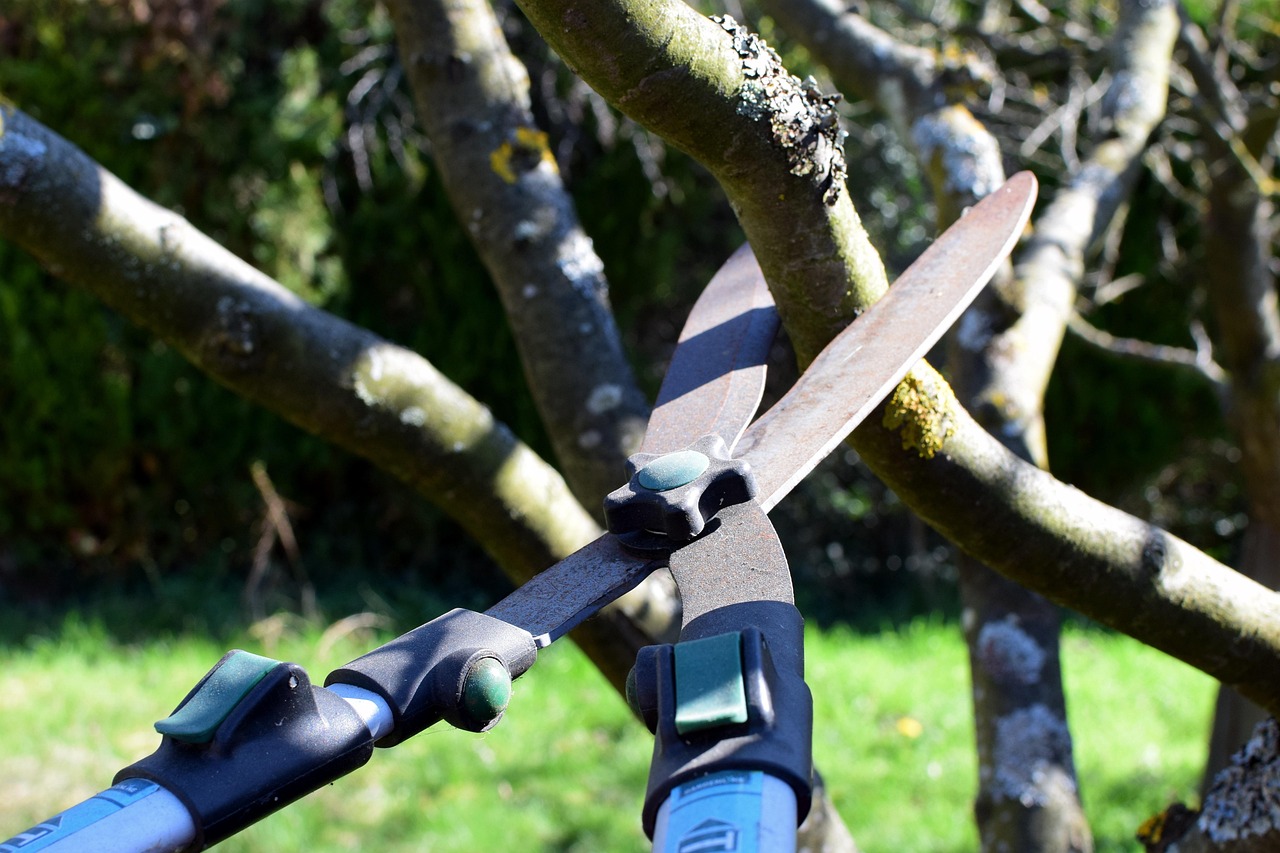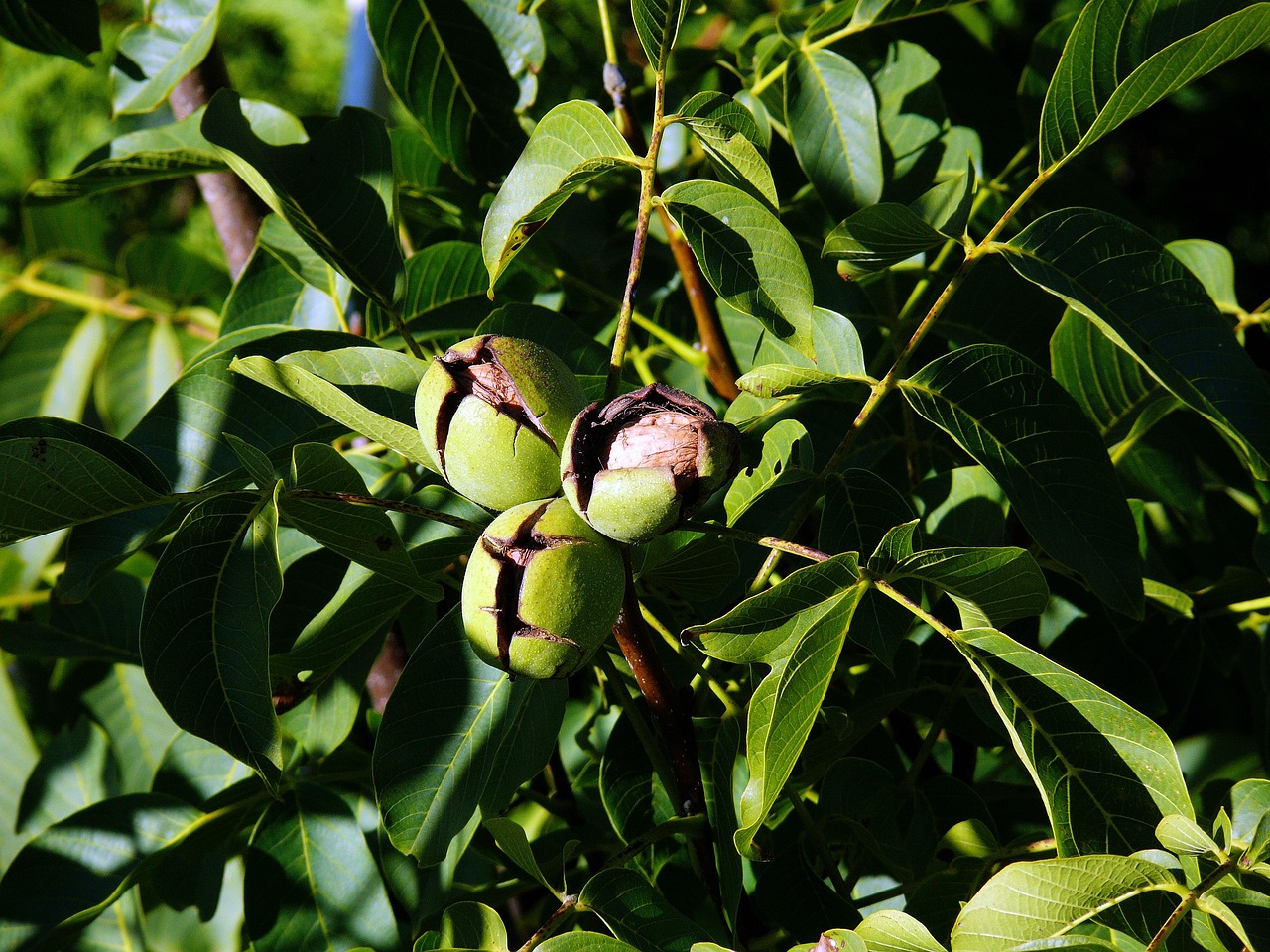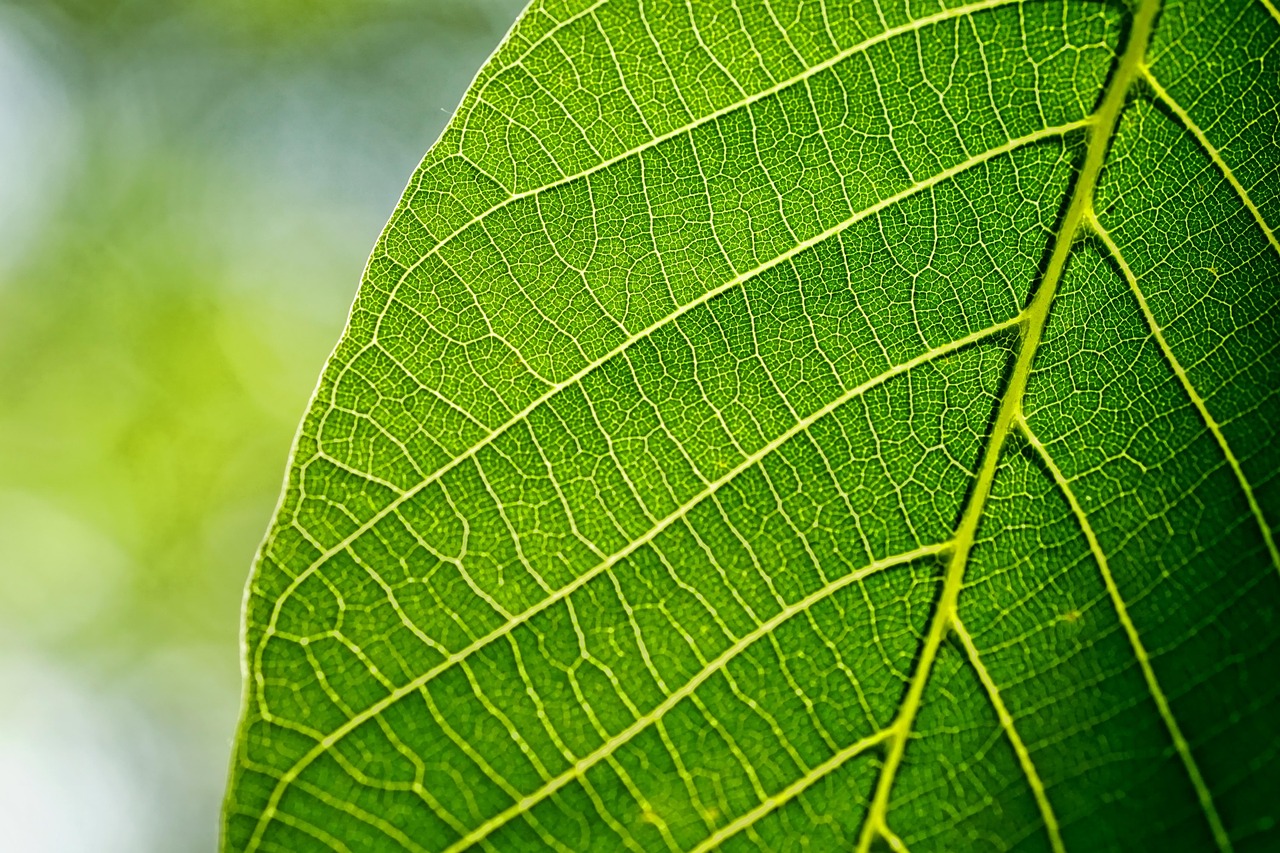Proper pruning is vital for maintaining healthy walnut trees, ensuring optimal nut production, and preventing disease. This guide covers essential pruning techniques, timing, tools, and best practices tailored for small orchards. Implement these expert tips to enhance tree health, improve yields, and sustain your walnut orchard’s productivity year-round.
Walnut trees are a valuable addition to small orchards, providing not only delicious nuts but also beautiful foliage. As with any fruit or nut-bearing tree, proper care and maintenance are crucial for achieving optimal growth and yield. Pruning is one of the most important aspects of walnut tree care. It ensures that the trees remain healthy, productive, and aesthetically pleasing.

Understanding the timing and techniques of pruning walnut trees can significantly impact their growth and nut production. Timing varies based on the age of the tree and specific local climate conditions. Most walnut trees benefit from pruning during late winter or early spring before new growth begins. However, younger trees may require different approaches than mature trees.
Importance of Pruning Walnut Trees
Pruning walnut trees serves multiple purposes. Here are some key reasons why it is essential:
- Enhances Airflow: Proper pruning allows better air circulation within the canopy, reducing humidity and preventing diseases.
- Increases Sunlight Exposure: Removing excess branches ensures that sunlight reaches all parts of the tree, promoting healthy leaf development.
- Encourages Strong Growth: Pruning helps shape the tree and encourages strong, upright growth which is important for stability.
- Improves Nut Quality: A well-pruned tree produces higher quality nuts by focusing energy on fewer branches.
Pruning can be divided into several techniques that vary based on the age of the walnut tree. Each method has its own set of guidelines to follow. Understanding these methods will help orchardists make informed decisions about their pruning strategies.

Pruning Techniques for Walnut Trees
There are a few key techniques used in pruning walnut trees. Each technique addresses specific needs based on the age and health of the tree.
Crown Thinning
Crown thinning involves selectively removing branches from the tree’s canopy. This technique increases light penetration and air circulation. It is especially beneficial for mature walnut trees. When thinning, focus on:
- Removing weak or crossing branches.
- Maintaining a balanced structure.
- Avoiding excessive removal of foliage.
Crown Raising
Crown raising is performed to increase clearance around the trunk. This is particularly useful for young trees or when planting near walkways or roads. Key steps include:

- Removing lower branches that interfere with access.
- Maintaining a height that supports future growth.
Crown Reduction
Crown reduction reduces the size of the tree’s canopy while maintaining its shape. This technique is often used on older trees that have outgrown their space. Important considerations include:
- Cutting back to lateral branches rather than leaving stubs.
- Avoiding severe cuts to prevent shock to the tree.
Best Practices for Pruning Walnut Trees
To ensure successful pruning, consider these best practices:
- Use Clean Tools: Always use sharp, clean pruning tools to prevent the spread of diseases.
- Avoid Heavy Pruning: Limit pruning to no more than one-quarter of the tree’s total foliage in one season.
- Monitor Tree Health: Regularly check for signs of disease or pests before and after pruning.
- Observe Growth Patterns: Understand how your specific walnut variety grows to tailor your pruning strategy effectively.
Common Mistakes in Walnut Tree Pruning
Avoiding common mistakes can make a significant difference in the health and productivity of walnut trees. Here are some pitfalls to watch out for:

- Over-Pruning: Removing too many branches can stress the tree and reduce nut production.
- Poor Timing: Pruning at the wrong time can lead to sap loss or damage from late frosts.
- Ignoring Tree Shape: Failing to maintain the natural shape can result in weak branches and poor growth.
Pruning walnut trees is both an art and a science. By understanding the importance of pruning, employing appropriate techniques, and following best practices, orchardists can promote healthy growth and maximize their nut production in small orchards.
Tools and Equipment for Pruning Walnut Trees
Having the right tools is essential for effective walnut tree pruning. Each tool serves a specific purpose and can enhance the quality of the cuts made. Here are some commonly used tools:
- Hand Pruners: Ideal for small branches, these are essential for making precise cuts.
- Loppers: These are used for thicker branches that are too large for hand pruners, providing leverage to make clean cuts.
- Pruning Saws: For larger branches, a pruning saw allows for effective cutting without damaging the tree.
- Pole Pruners: These are useful for reaching high branches without the need for a ladder.
- Safety Gear: Gloves, goggles, and protective clothing should always be worn to ensure safety during pruning.
Before starting any pruning work, inspect and clean your tools. This practice helps prevent the spread of diseases between trees. Sharp tools also make cleaner cuts, which heal faster and reduce the risk of infection.
Understanding Walnut Tree Growth Stages
Walnut trees go through several growth stages, each requiring different care and pruning techniques. Understanding these stages is key to effective orchard management.
Young Trees (0-3 Years)
During the first few years, the focus should be on establishing a strong structure. Key activities include:
- Selecting a Leader: Choose a central leader to promote upward growth.
- Encouraging Strong Branches: Allow 3-5 well-spaced lateral branches to develop around the trunk.
- Removing Competing Leaders: Remove any competing leaders to ensure a single dominant trunk.
Mature Trees (4-10 Years)
Mature walnut trees require maintenance to ensure ongoing productivity. Focus on the following practices:
- Crown Thinning: Remove some branches to improve light penetration and air circulation.
- Height Management: Maintain a manageable height by reducing overly tall branches.
- Pest and Disease Monitoring: Regularly check for signs of pests or diseases, addressing issues promptly.
Old Trees (10+ Years)
As walnut trees age, they may need special attention to continue producing nuts effectively. Consider these practices:
- Major Pruning Sessions: Engage in more extensive pruning to rejuvenate the tree.
- Removing Deadwood: Clear out dead or diseased branches to promote healthier growth.
- Balancing Production: Assess nut production levels and adjust pruning techniques accordingly.
Pest and Disease Management in Pruned Walnut Trees
Maintaining the health of walnut trees involves managing potential pests and diseases that can affect them, especially after pruning. Here are some common issues to watch for:
Pests
Pests can pose significant risks to walnut trees. Common pests include:
- Walnut Husk Fly: These flies lay eggs in the developing nuts, causing damage.
- Leafhoppers: These insects suck sap from leaves, leading to reduced vigor.
- Webworms: These pests can defoliate trees if not managed properly.
Diseases
Diseases can also impact tree health post-pruning. Common diseases include:
- Crown Gall: This bacterial infection causes galls on roots and stems, limiting growth.
- Walnut Blight: This fungal disease leads to leaf spots and can ultimately affect nut production.
- Powdery Mildew: A fungal infection that appears as white powder on leaves, affecting photosynthesis.
To manage these pests and diseases, consider implementing an integrated pest management (IPM) approach. This includes monitoring pest populations, using biological controls, and applying targeted treatments when necessary.
The Role of Soil Health in Walnut Tree Growth
The health of the soil in which walnut trees grow plays a crucial role in their overall health and productivity. Healthy soil provides essential nutrients, supports root development, and enhances water retention.
Nutrient Requirements
Walnut trees require certain nutrients to thrive. Key nutrients include:
- Nitrogen: Essential for leaf production and overall growth.
- Phosphorus: Important for root development and flowering.
- Potassium: Helps with overall tree health and nut quality.
Soil Testing
Regular soil testing is recommended to determine nutrient levels and pH balance. Based on the results, amendments such as compost or fertilizers can be applied to support healthy growth. Maintaining optimal soil conditions is vital for maximizing nut production and ensuring robust tree health.
Caring for walnut trees in small orchards requires knowledge of effective pruning techniques, an understanding of growth stages, pest management strategies, and soil health. By integrating these factors into a comprehensive orchard care plan, growers can achieve optimal results from their walnut trees.
Harvesting and Post-Pruning Care for Walnut Trees
Harvesting walnuts is a vital phase in the life cycle of walnut trees. The timing and method of harvest can greatly influence the quality of the nuts. Additionally, proper care after pruning is essential to promote recovery and ensure healthy growth for the next season.
Timing the Harvest
Walnut harvest timing is crucial. Nuts should be harvested when they are fully mature. Indicators of maturity include:
- Shell Hardening: The shell of the walnut should be hard to the touch.
- Husk Separation: The green husk begins to separate from the shell.
- Change in Color: The husk may turn yellow or brown, indicating readiness for harvest.
Typically, harvest occurs in late summer to early fall, depending on the climate and walnut variety. It is important to monitor your trees regularly as the harvest window can vary.
Harvesting Techniques
There are various methods for harvesting walnuts. The technique used can depend on the size of the orchard and the available resources. Common methods include:
- Hand Harvesting: Suitable for small orchards, this method involves picking nuts directly from the ground or shaking branches to release them.
- Mechanical Harvesting: Larger orchards may employ mechanical harvesters that shake trees and collect nuts efficiently.
Regardless of the method, it is essential to handle walnuts carefully to prevent damage. Damaged nuts can lead to spoilage or reduced quality.
Post-Harvest Handling
After harvesting walnuts, proper handling is crucial to maintaining their quality. Follow these steps for effective post-harvest management:
Curing and Drying
Walnuts must be cured and dried to ensure long-term storage. Here’s how to do it:
- Remove the Husk: After harvesting, remove the green husks as soon as possible.
- Spread Nuts Out: Lay the nuts in a single layer on a clean surface, such as a tarp or drying rack, in a cool, dry place with good air circulation.
- Monitor Drying: Allow the nuts to dry for several weeks until they reach a moisture content of around 8-10%.
Proper drying prevents mold growth and ensures better flavor and shelf life.
Storing Walnuts
Once dried, walnuts should be stored correctly to maintain their quality for as long as possible. Consider these storage options:
- Airtight Containers: Store walnuts in airtight containers to protect them from moisture and pests.
- Cooled Environment: If possible, keep walnuts in a cool, dark place like a cellar or refrigerator to extend shelf life.
- Avoid Sunlight: Exposure to light can lead to rancidity, so ensure that storage areas are dark.
Winter Care for Walnut Trees
After harvesting and pruning, winter care is essential for walnut trees. Proper winterization helps trees recover from pruning stress and prepares them for the next growing season.
Mulching
Applying mulch around the base of walnut trees provides numerous benefits during winter:
- Insulation: Mulch helps regulate soil temperature and protects roots from freezing temperatures.
- Moisture Retention: It retains moisture in the soil, preventing drought stress during winter months.
- Weed Suppression: Mulch reduces competition from weeds that can deprive young trees of nutrients.
Irrigation Management
While walnut trees typically require less water during winter, it is essential to monitor soil moisture levels. If conditions are particularly dry, consider providing supplemental irrigation. This helps keep roots hydrated without overwatering.
Pest and Disease Prevention During Winter
As winter approaches, preventive measures against pests and diseases become crucial. Here are some strategies to consider:
- Inspect Trees Regularly: Look for any signs of damage or disease during winter checks.
- Treat Known Issues: Apply appropriate treatments if any pests or diseases are detected before winter sets in.
- Cultural Practices: Implement practices that discourage pest overwintering, such as removing fallen leaves and debris around trees.
Caring for walnut trees during winter helps ensure they emerge healthy in spring. By focusing on post-harvest handling, proper storage, and winter care practices, orchardists can support their walnut trees through seasonal changes effectively.
Advanced Techniques for Walnut Tree Pruning
As growers become more experienced, they may want to explore advanced techniques for walnut tree pruning that can further enhance tree health and nut production. These methods require a deeper understanding of tree biology and growth patterns, but they can yield impressive results.
Espalier Techniques
Espalier is a pruning technique that involves training trees to grow flat against a wall or trellis. This method can be particularly useful in small orchards where space is limited. Advantages of espalier include:
- Maximized Space: By growing trees flat, you can maximize the use of vertical space.
- Improved Sunlight Exposure: Espaliered trees receive more direct sunlight, which can enhance nut production.
- Ease of Harvesting: Lower branches are more accessible for harvesting.
To create an espaliered walnut tree, select a strong central leader and prune side branches to maintain desired shapes. Regular maintenance is required to keep the structure intact.
Selective Pruning for Quality
Selective pruning focuses on enhancing the quality of nuts rather than just quantity. This method involves:
- Removing Excess Fruit: Thinning out nuts can allow remaining nuts to grow larger and healthier.
- Targeting Specific Branches: Remove less productive branches to redirect energy to more fruitful areas.
- Balancing Growth: Ensure that energy is evenly distributed among branches to avoid overcrowding.
Selective pruning requires careful observation of tree health and productivity over time. Documenting which branches produce well can help in making informed decisions during pruning seasons.
Environmental Considerations for Walnut Orchards
Sustainable practices are crucial for maintaining the health of walnut orchards. Environmental considerations play an important role in both the immediate care of the trees and their long-term viability.
Water Management
Efficient water management is vital for walnut tree health. Key strategies include:
- Drip Irrigation: This system delivers water directly to the roots, minimizing waste and promoting deep root growth.
- Rainwater Harvesting: Collecting rainwater can provide an eco-friendly irrigation source while reducing water costs.
Soil Conservation
Maintaining soil health is essential for sustainable walnut production. Practices to consider include:
- No-Till Farming: Reducing soil disturbance helps maintain soil structure and biodiversity.
- Cover Crops: Planting cover crops can improve soil fertility and prevent erosion.
Community and Educational Resources
Engaging with local agricultural communities and educational resources can enhance your walnut farming experience. Here are some options to consider:
- Local Agricultural Extension Offices: These offices often provide workshops, resources, and expert advice on walnut tree care.
- Online Forums and Social Media Groups: Joining online communities allows growers to share experiences, ask questions, and learn from each other.
- Workshops and Seminars: Attending local workshops on fruit tree management can provide hands-on learning opportunities.
Conclusion
Walnut tree pruning is a multifaceted process that requires knowledge, skill, and attention to detail. Proper pruning techniques enhance tree health, improve nut quality, and increase overall production. By understanding the various growth stages of walnut trees, utilizing appropriate tools, and implementing advanced pruning methods, orchardists can significantly benefit their crops.
Additionally, focusing on soil health, pest management, and sustainable practices ensures the long-term viability of walnut orchards. Engaging with community resources further enhances learning opportunities and fosters a spirit of collaboration among growers.
The journey of cultivating walnut trees in small orchards is rewarding, offering delicious nuts and aesthetic beauty. By applying the knowledge shared in this article, walnut growers can achieve optimal results season after season.
